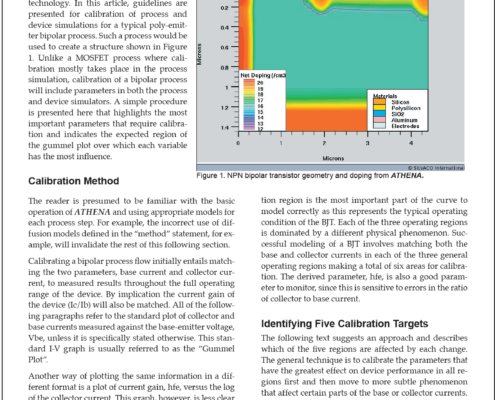
Calibrating a Typical Bipolar Process Flow
A common request from TCAD (Technology Computer Aided Design) users is advise on how to calibrate the process flow and device simulator to a particular technology. In this article, guidelines are presented for calibration of process and device simulations for a typical poly-emitter bipolar process.
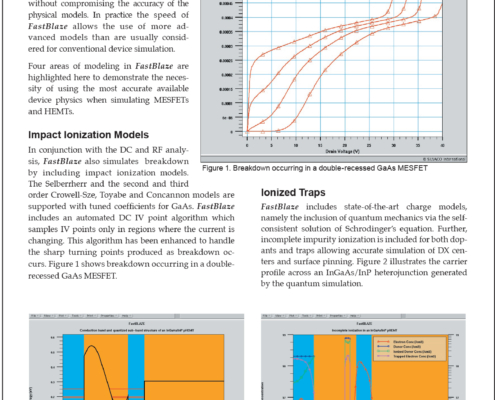
Accurate, High Speed Physics in FastBlaze
FastBlaze uses novel device simulation techniques to simulate typical MESFET and HEMT characteristics in less than a minute. To be a truly useful engineering tool this extremely high speed must be achieved without compromising the accuracy of the physical models.
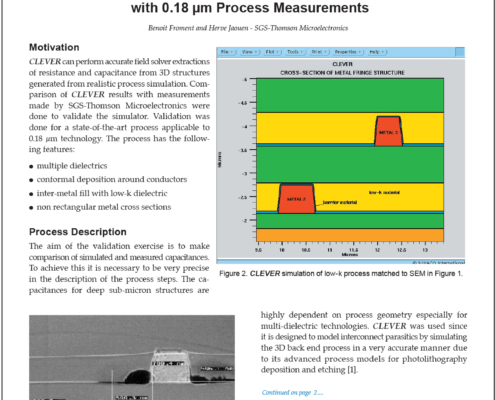
Validation of CLEVER Interconnect Parasitics with 0.18 µm Process Measurements Benoit Froment and Herve Jaouen – SGS-Thomson Microelectronics
CLEVER can perform accurate field solver extractions of resistance and capacitance from 3D structures generated from realistic process simulation. Comparison of CLEVER results with measurements made by SGS-Thomson Microelectronics were done to validate the simulator.
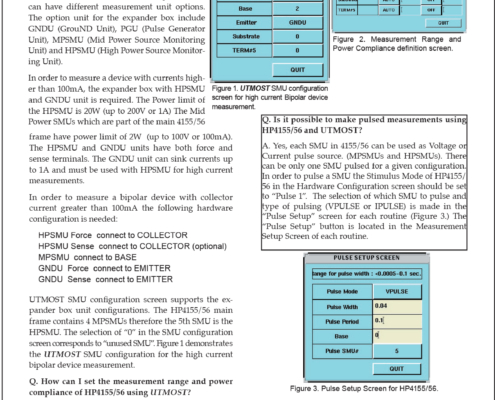
HINTS & TIPS – October 1998
The HP4155/56 DC Analyzer can be configured with SMU and Pulse Generator expander box frame called HP41501A. The expander box can have different measurement unit options.
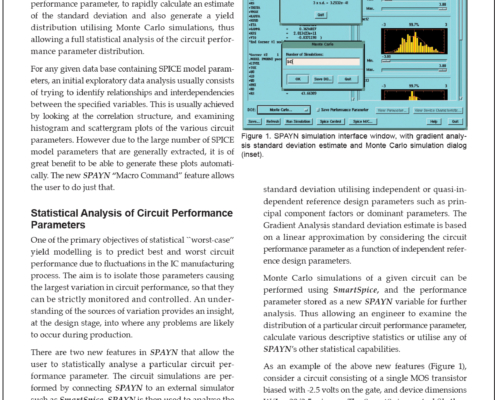
SPAYN Recent Developments
An important aspect of statistical process control in IC production is the ability to predict circuit performance variation in the manufacturing process. Two new features in SPAYN allow the user, for a particular circuit performance parameter, to rapidly calculate an estimate of the standard deviation and also generate a yield distribution utilising Monte Carlo simulations, thus allowing a full statistical analysis of the circuit performance parameter distribution.
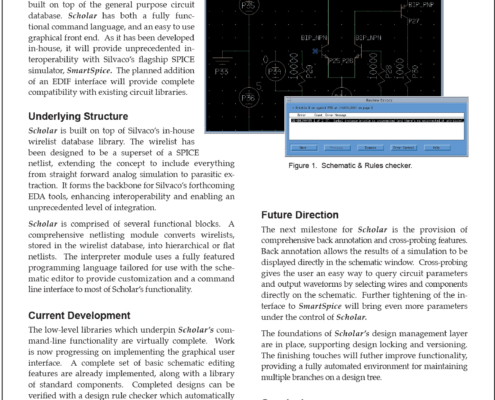
Scholar
The debut of Silvaco's new schematic editor, Scholar, is drawing closer. Scholar is a sophisticated design tool which derives its power and flexibility from the fact that it is built on top of the general purpose circuit database.
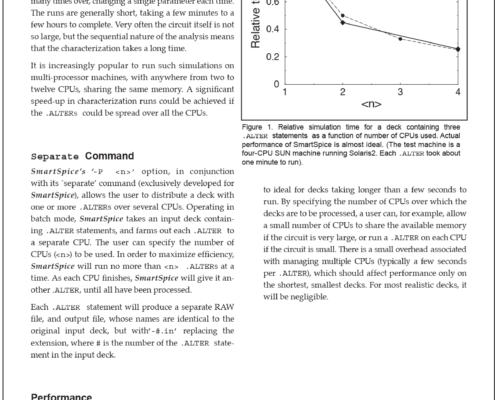
PHILIPS Model 9
In collaboration with STMicroelectronics Central R&D at Crolles (France), a new routine has been developed in UTMOST III to provide a complete solution for MOS Philips Model 9 parameter extraction. This methodology[1] is based on the local optimization method; we can determine a limited set of 18 parameters (so called miniset) to describe the electrical behavior of each device, considering it as the reference device.
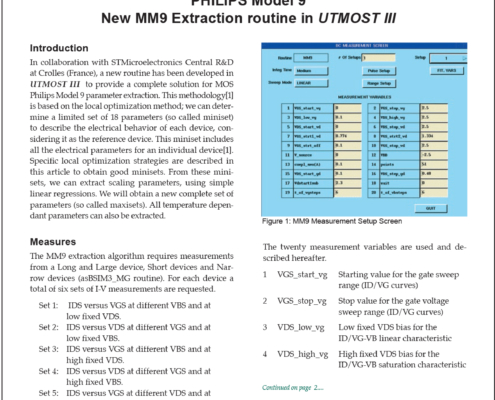
Parallel .ALTER Statements in SmartSpice
The .ALTER statement is designed to allow a SPICE input deck to be re-run with a change in a single parameter. This feature is especially useful in characterization. For this type of work, users will want to run a single deck many times over, changing a single parameter each time.
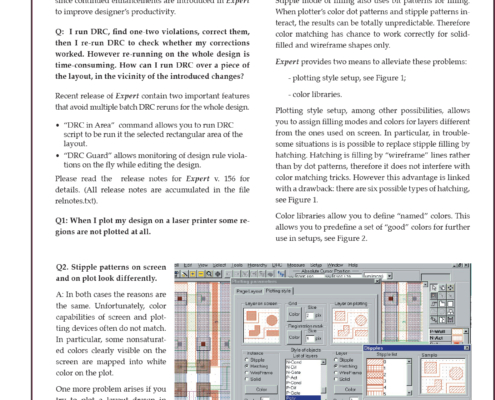
HINTS & TIPS – September 1998
I run DRC, find one-two violations, correct them, then I re-run DRC to check whether my corrections worked. However re-running on the whole design is time-consuming. How can I run DRC over a piece of the layout, in the vicinity of the introduced changes?
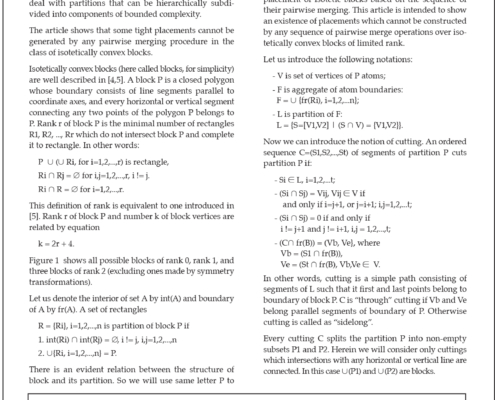
Recursive Cutting of Rectangular Partitions for VLSI Floorplanning
Rectangular partitionings form a mathematical base for many modern approaches to automation of VLSI design [1-3]. In particular, popular methodologies of hierarchical placement (by cell grouping / merging) as well as procedures of global routing and layout compression deal with partitions that can be hierarchically subdivided into components of bounded complexity.
